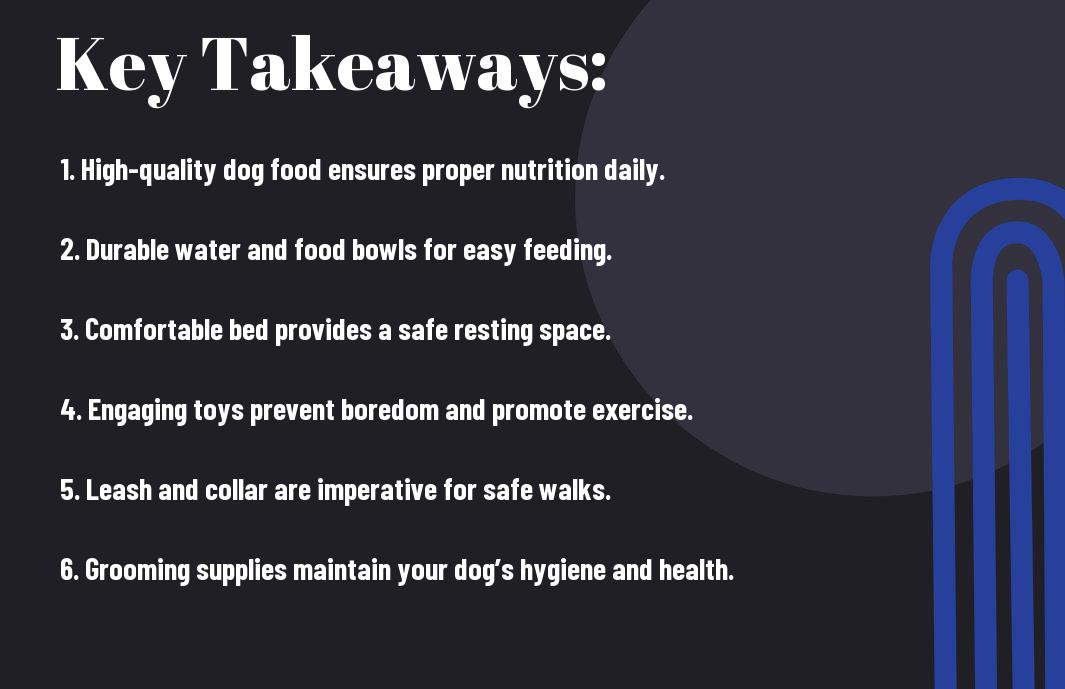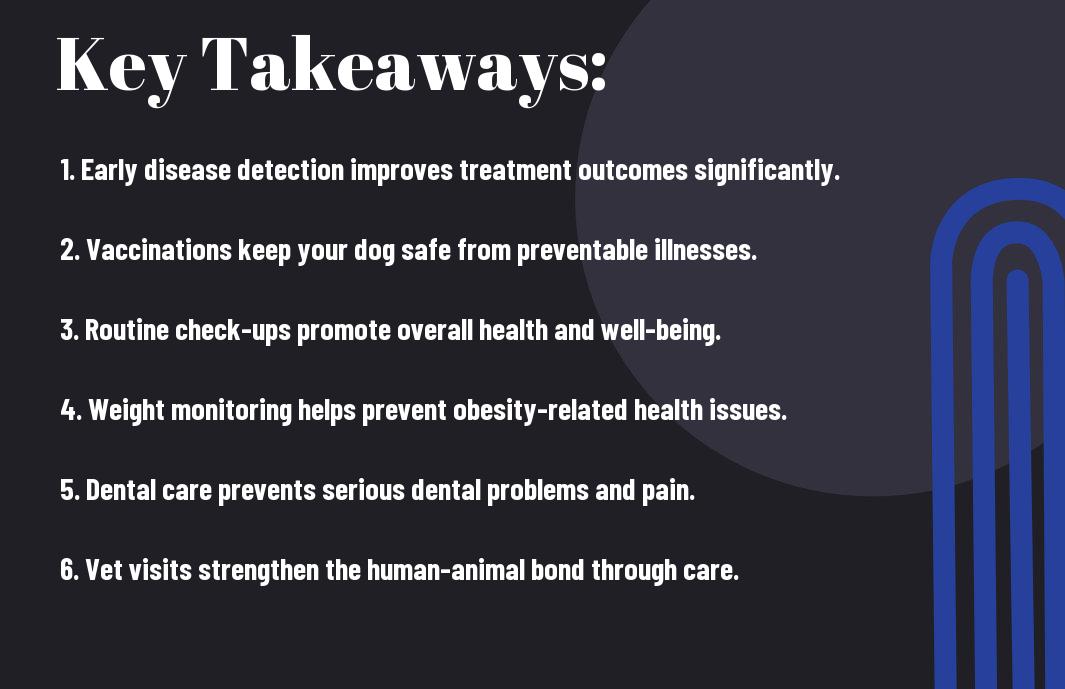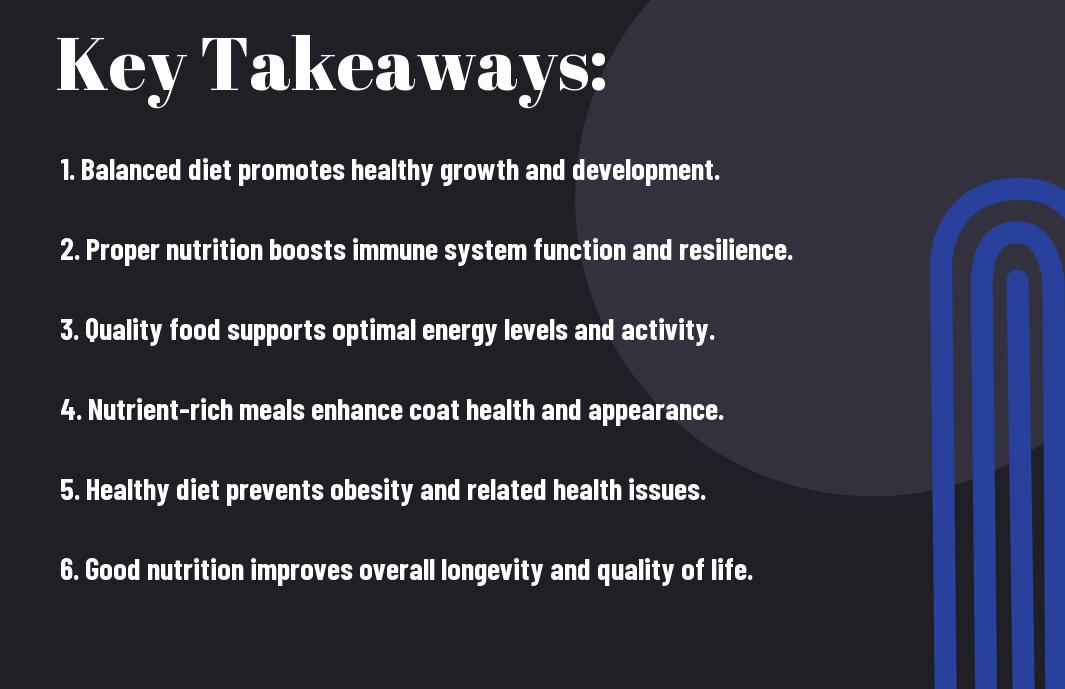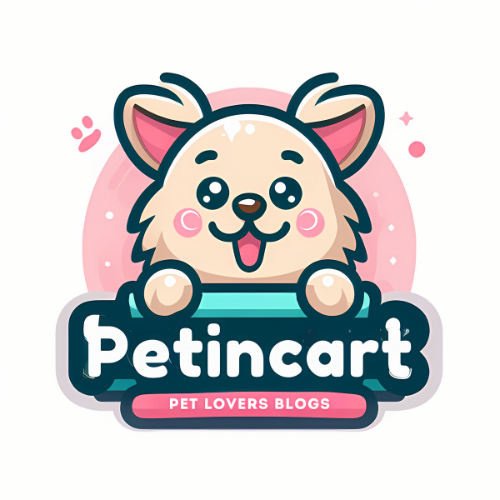Just as you prioritize your own health, it’s equally important to ensure your furry friend stays healthy and happy. By following these 10 proven tips, you can prevent many common health issues and promote a longer, more fulfilling life for your dog. From proper nutrition to regular exercise and veterinary visits, these strategies will empower you to take charge of your pet’s well-being. Dive in to discover how simple changes can lead to positive outcomes in your dog’s health!


Balanced Diet
While you may love to spoil your dog with treats and snacks, maintaining a balanced diet is imperative for their overall health and longevity. A diet that contains all the necessary nutrients plays a vital role in your dog’s physical condition, energy levels, and immune function. An adequate balance of proteins, fats, carbohydrates, vitamins, and minerals will help your furry friend thrive. To achieve this, understanding what constitutes a balanced diet is paramount in keeping your dog happy and healthy.
Quality Dog Food
Some dog foods are formulated with premium ingredients that support your dog’s health, while others may contain fillers, artificial colors, or preservatives that can lead to health issues. When identifying a dog food, look for products that list high-quality proteins as the primary ingredient and avoid food that has too many by-products or low-quality fillers. It’s important to choose a reputable brand that adheres to the highest safety regulations and nutritional standards. Always check for the AAFCO (Association of American Feed Control Officials) label, as this indicates the food meets the necessary nutrient profiles.
Proper Portion Sizes
Diet plays a significant role in ensuring that your dog maintains a healthy weight and energy level. Overfeeding can lead to obesity, which may cause a range of health problems, including diabetes, joint issues, and heart disease. On the flip side, underfeeding can lead to malnutrition and a weakened immune system. Providing the correct portion sizes according to your dog’s age, weight, and activity level is imperative to support their overall well-being.
Plus, you can consult with your veterinarian to establish the ideal portion sizes for your dog. They can help you understand your dog’s specific needs based on their breed, age, and health conditions. Using the feeding chart on the dog food packaging can also serve as a helpful guide. By keeping an eye on their weight and adjusting portions as necessary, you’re taking a proactive step toward ensuring your dog leads a healthy and active life.
Regular Exercise
Some pet owners underestimate the importance of regular exercise for their dogs, but it’s important for maintaining your dog’s physical and mental health. Regular exercise helps prevent obesity, reduces the risk of chronic diseases, and keeps your dog’s muscles and joints strong. Moreover, exercise offers a great opportunity for bonding between you and your furry companion, leading to a happier and healthier life together.
Daily Walks
You should aim to take your dog for a walk at least once a day. This not only provides your dog with much-needed physical activity, but it also exposes them to new scents, sights, and sounds, which can help stimulate their minds. Depending on your dog’s breed, age, and energy level, the length and intensity of the walk may vary. For most dogs, a 30-minute walk is a great starting point, but some high-energy breeds may require more time to satisfy their exercise needs.
You also have the opportunity to engage in socialization during these daily walks. Meeting other dogs and people can help improve your dog’s behavior and reduce anxiety in social settings. As you stroll together, be mindful of your surroundings and ensure your dog is safe from distractions or aggressive animals. Keeping your dog on a leash during walks is highly advisable for their safety and the safety of others.
Playtime Activities
With a variety of playtime activities, you can significantly enrich your dog’s life. Interactive games such as fetch, tug-of-war, and hide-and-seek keep your dog entertained and engaged. These activities offer physical exercise while also promoting mental stimulation, which is equally important for your dog’s well-being. Engaging in playtime activities can help alleviate behavioral issues stemming from boredom or frustration.
Playtime has the added benefit of allowing you to observe your dog’s behavior and health closely. Watch for any signs of fatigue or discomfort, as well as enthusiasm and willingness to participate. Providing a mix of different play activities can not only keep your dog healthy but also help develop their skills and instincts. Additionally, be sure to incorporate safe and appropriate toys to prevent injury during play. Prioritizing playtime activities in your dog’s daily routine will foster a strong bond and promote a happy and healthy lifestyle.
Routine Vet Visits
All pet owners should prioritize routine vet visits to ensure the long-term health and well-being of their furry companions. Regular check-ups allow your veterinarian to monitor your dog’s health over time, helping to catch any potential issues before they become serious. By establishing a good relationship with your vet, you can create a proactive health strategy tailored to your dog’s individual needs and risk factors.
Annual Check-ups
Assuming your dog is generally healthy, annual check-ups are recommended. During these visits, your veterinarian will perform a comprehensive examination to assess your dog’s overall health. This includes checking their weight, dental health, skin conditions, and more. These assessments allow for timely adjustments to your dog’s diet, exercise routine, and any potential treatment plans.
Additionally, routine visits can help identify early signs of disease or injury that you might not notice at home. Catching these issues early can help prolong your dog’s life and improve their quality of living. Regular check-ups establish a baseline of your dog’s health, which is invaluable for future visits.
Vaccinations Updates
Even if your dog appears healthy, staying up to date with vaccinations is vital. Vaccines protect against a variety of infectious diseases that can be serious or even fatal. Depending on your dog’s age, lifestyle, and health status, your veterinarian will recommend the appropriate vaccination schedule. Annual vaccines are typically necessary to maintain their immunity against common canine diseases.
Any setback in vaccinations could leave your dog vulnerable to harmful diseases. Regular discussions with your veterinarian about updated vaccine protocols can provide peace of mind and protect your pet from infections that may result in severe complications. Strong herd immunity protects not only your dog but also other pets in your community. It is imperative to stay informed about recommended vaccines, especially if you plan to travel or participate in activities with other dogs.
Dental Care
Your dog’s dental health is a vital component of their overall well-being. Neglecting proper dental care can lead to various health issues, including periodontal disease and systemic infections. By prioritizing dental hygiene, you can help ensure that your furry friend leads a longer, healthier life.
Brush Teeth Regularly
With regular brushing, you can significantly reduce the buildup of plaque and tartar on your dog’s teeth. It’s recommended that you brush your dog’s teeth at least two to three times a week, if not daily. Use a soft-bristled toothbrush designed specifically for dogs and toothpaste that is safe for them to swallow. Establishing a brushing routine helps your dog become accustomed to the process, making it easier for both of you.
With diligence, you can promote strong teeth and healthy gums in your pet. If your dog resists tooth brushing at first, start slowly and gradually increase the duration as they become more comfortable. Maintaining oral hygiene not only boosts your dog’s health but also contributes to fresher breath, making snuggles on the couch more enjoyable.
Chew Toys Assistance
While providing chew toys, you can offer your dog an excellent way to maintain their dental health naturally. Chewing on appropriate toys helps to scrape away plaque buildup while also strengthening their teeth and gums. Look for durable toys that are specifically designed to promote oral health, as they can withstand vigorous chewing and promote healthier teeth.
While chew toys are beneficial, it’s crucial to choose the right ones for your dog’s size and chewing style. Avoid items that can splinter or break off into small pieces, which can be a choking hazard. You can also opt for dental chews or treats that promote dental health. Many of these products are formulated to reduce plaque and tartar buildup, making them a positive addition to your dog’s dental care routine.
Mental Stimulation
For a well-rounded and healthy dog, mental stimulation is just as important as physical exercise. Engaging your dog’s brain not only helps to ward off boredom but also promotes good behavior and reduces anxiety. A mentally stimulated dog is often happier, more balanced, and less likely to develop destructive habits. There are various ways you can provide your pup with the mental exercise they need to thrive.
Puzzle Toys
You’ll find that puzzle toys are an excellent way to engage your dog’s problem-solving abilities. These interactive toys often require your dog to manipulate them in some way to access treats hidden inside. The challenge encourages sharp thinking and keeps your dog occupied for longer periods. Various toys are available that cater to different skill levels, so you can choose one that sets the right challenge for your canine companion.
Incorporating puzzle toys into your dog’s routine not only provides them with intellectual stimulation but also promotes healthy play habits. As your dog figures out how to get to the treats, they engage in critical thinking skills, which can be surprisingly rewarding. Plus, you’ll have the satisfaction of knowing you’re providing enrichment that contributes to their overall well-being.
Training Sessions
One of the most effective ways to give your dog mental stimulation is through regular training sessions. Engaging your dog in learning new commands or tricks helps keep their mind active while also strengthening the bond between you. Whether you opt for basic obedience or more advanced skills, your dog thrives on the routine and challenge. Short, frequent sessions can be more beneficial than long, infrequent ones, ensuring your dog remains focused and eager to learn.
Stimulation through training not only improves your dog’s behavior but also nurtures their sense of accomplishment. Teaching your dog new skills can foster confidence and strengthen your communication. Incorporating positive reinforcement, such as praise or treats, will ensure that training remains a fun and enjoyable experience for both of you. This interaction not only benefits their cognitive health, but it also promotes a well-adjusted and happy pet.
Hydration
Now, keeping your dog hydrated is vital for their overall health. Proper hydration supports various bodily functions, including digestion, circulation, and temperature regulation. It is vital to make sure your dog has access to fresh water at all times, especially during hot weather or after exercise. By ensuring your furry friend drinks enough water, you can help prevent serious health issues like kidney problems and urinary tract infections.
Fresh water daily
On a daily basis, you should provide your dog with fresh water. It’s important to change their water at least once a day to keep it clean and inviting. This simple act can significantly enhance their desire to hydrate, making it less likely that they will suffer from dehydration. Dogs often prefer cool water, so consider adding ice cubes during warmer months to make the water more appealing.
Clean dishes routinely
While it may seem like just a minor detail, keeping your dog’s water dish clean is vital for their health. Over time, lingering bacteria and algae can accumulate in their bowls, which may lead to stomach issues or infections. It’s advisable to wash their drinking dishes with soap and hot water every few days, ensuring that the bowls are thoroughly rinsed before refilling with fresh water.
A clean water dish not only promotes better hydration but also keeps your dog safe from harmful pathogens. Using stainless steel or ceramic bowls, which are less porous than plastic, can help reduce the growth of bacteria. By prioritizing your dog’s hydration and maintaining clean dishes, you significantly contribute to their overall well-being and happiness.

Grooming
After bringing a dog into your home, you quickly learn that grooming plays a significant role in maintaining your pet’s health. Regular grooming helps to eliminate dirt, debris, and loose fur, while also allowing you to monitor your dog for any unusual lumps, bumps, or skin conditions that may require veterinary attention. Grooming not only keeps your dog’s coat looking its best, but it also promotes bonding time between you and your furry friend.
Regular baths
You’ll want to bathe your dog regularly to keep their coat clean and free from odors. The frequency of baths can vary based on your dog’s breed, activity level, and skin type, but a general guideline is to bathe your dog every 4 to 6 weeks. Use a dog-specific shampoo to avoid irritating their skin – human shampoos can disrupt the natural pH balance of your dog’s skin and lead to dryness or allergies.
Additionally, a bath can be an excellent opportunity to inspect your dog’s skin for any signs of irritation or fleas. After the bath, be sure to dry your dog thoroughly, especially if they have long fur, as dampness can lead to skin infections. Always reward your dog after bath time to create a positive association with the process.
Coat brushing
Even if your dog has a short coat, brushing should still be a part of your grooming routine. Regular brushing helps to remove loose hair and prevents matting, which can become uncomfortable for your dog. Different breeds may require specific types of brushes, so choose one that is suitable for your dog’s coat type to achieve the best results.
Coat brushing is also beneficial for your dog’s skin. It promotes healthy oil distribution throughout their fur, improving overall sheen while minimizing the risk of skin conditions. Brushing stimulates circulation and helps to remove dead skin cells, keeping your dog’s skin healthy and reducing the chances of itchiness or irritation. Consider setting aside time for brushing sessions, making it a relaxing routine that strengthens your bond with your canine companion.
Healthy Weight
Not maintaining a healthy weight for your dog can lead to a host of health issues. Obesity in dogs is linked to increased risks of conditions such as diabetes, heart disease, and joint problems. Therefore, keeping your dog at an ideal weight is important for their well-being and longevity. A combination of proper diet, regular exercise, and weight management practices can help ensure that your furry friend stays fit and healthy.
Monitor Body Condition
Condition is a key factor in assessing your dog’s health. Regularly check your dog’s body condition score (BCS) to determine if they are underweight, overweight, or at a healthy weight. A typical scale ranges from one to nine, with a score of four to five being ideal. You can assess your dog’s BCS by feeling their ribcage; you should be able to feel their ribs without too much pressure but they shouldn’t be excessively protruding.
Additionally, observe your dog’s waistline. When viewed from above, your dog should have a noticeable indentation behind the rib cage. If you find it challenging to determine your dog’s weight status, consult with your veterinarian; they can guide you on achieving and maintaining an ideal weight for your specific breed and age.
Avoid Overfeeding
With many pet owners tempted to show their love through food, overfeeding can become an easy pitfall. Portion control is important in managing your dog’s diet, as overfeeding not only contributes to weight gain but also increases the likelihood of developing serious health issues. Instead of giving extra treats or larger meal sizes, focus on providing appropriate portions according to your dog’s specific needs.
The key to avoiding overfeeding lies in understanding the right calorie count for your dog’s size, active level, and age. Always refer to feeding guidelines based on your dog’s weight and consult your veterinarian for tailored advice. Regularly measuring portions and maintaining a schedule for feeding will also help keep the habit of overfeeding at bay. By doing so, you provide your dog with the nutrients they need without unnecessary calories that could lead to weight issues.
Socialization
Your dog’s socialization is a fundamental aspect of their overall health and well-being. A well-socialized dog is more likely to be friendly, confident, and calm in various environments. Socialization helps reduce anxiety and fearfulness and encourages positive interactions with both people and other animals. This not only enhances their quality of life but also strengthens your bond with them.
Dog Parks
If you’re looking for a great way to socialize your dog, consider visiting a dog park. These parks offer a safe and controlled environment where dogs can interact with others and burn off excess energy. It’s important to monitor your dog during playtime to ensure they are comfortable and happy. Always keep an eye out for any signs of aggression or over-excitement, as these can lead to negative experiences for both your dog and other park-goers.
If your dog is nervous about being around other dogs, start slowly by allowing them to observe from a distance and gradually introduce them to new friends. Choose parks that have a separate area for smaller or less active dogs to make their initial socialization less intimidating. A positive experience at the dog park can lead to enhanced social skills and greater confidence in your pet.
Playdates with Others
On the other hand, organizing playdates with other dogs can further enhance your dog’s social skills. This private interaction allows your dog to mingle with familiar companions in a safe and controlled setting. It’s important to supervise these playdates to ensure that the interactions remain positive and enjoyable for all dogs involved.
You can facilitate these playdates by arranging gatherings with friends or family who have dogs that match your pet’s energy level and temperament. Choose a neutral area, such as your backyard or a local park, to prevent territorial behavior. During these sessions, ensure that all dogs feel comfortable and engaged by offering toys and breaks as needed. Effective playdates can lead to stronger friendships between your dog and their peers, making them more adaptable and well-mannered.
Parasite Prevention
Keep your dog protected from parasites, as these unwanted guests can lead to serious health issues. Regular checks and preventative measures can save your dog from discomfort and potentially dangerous diseases. Fleas, ticks, and worms are some of the most common parasites that can invade your dog’s health, and their impact can be more than just irritating. By staying proactive, you can ensure that your furry friend remains happy and healthy.
Flea Treatments
Parasite control begins with effective flea treatments. Fleas can cause skin irritations and introduce other serious conditions such as tapeworms into your dog’s body. You should consult your veterinarian for the best flea treatment suitable for your dog’s age, size, and health condition. They will guide you in choosing from topical treatments, oral medications, or even flea collars that can offer long-lasting protection against infestations.
In addition to treating your dog, focusing on your home environment is necessary for tackling fleas effectively. Vacuuming regularly and washing your dog’s bedding can help eliminate flea eggs and larvae, reducing the likelihood of reinfestation. Integrated flea control is vital, so stay consistent with treatments to keep your dog feeling his or her best.
Heartworm Medication
For heartworm prevention, you should administer monthly heartworm medication as directed by your veterinarian. This simple step can protect your dog from a condition that could be fatal if left untreated. Heartworms are transmitted through mosquito bites, and they can grow into adults, living in the heart and lungs, causing severe damage to your dog’s health. The best defense is a strong offense; regular medication can ensure that your dog stays protected.
Plus, treating heartworm requires a lengthy and often painful process for your dog, including injections and strict exercise limitations. By ensuring your dog is on preventative medication, you mitigate the risks significantly. It’s vital to have your dog’s heartworm status checked annually through testing, even while on preventative medication, to catch any potential issues early on. This practice can contribute significantly to your dog’s overall well-being.
Safe Environment
After bringing a dog into your home, creating a safe environment is necessary for their health and well-being. A safe space means a life free from unnecessary risks, enabling your furry friend to thrive both physically and mentally. You have the power to control your pet’s surroundings, which contributes significantly to their happiness and safety.
Remove hazards
You need to carefully assess your home and yard for potential dangers that could harm your dog. Items like toxic plants, cleaning products, and small objects that could be swallowed should be removed or secured away from their reach. Additionally, ensure that any cords, such as electrical or blind cords, are tucked away to prevent accidental entanglements. Keeping sharp objects and dangerous tools out of sight is also important; your dog is curious and may explore every nook and cranny if given the chance.
You should also be vigilant about outdoor hazards. This includes things like pesticides and fertilizers, which can be harmful if ingested. Regularly check your yard for any potential threats, including holes or gaps in fences that might allow for an escape. By being proactive in eliminating these hazards, you can create an environment where your dog feels secure and protected.
Secure boundaries
Even if you have a fenced yard, ensuring secure boundaries is vital to prevent your dog from wandering off or getting into dangerous situations. A well-constructed fence can keep your dog contained, but it’s important to regularly inspect it for any damage or weaknesses. Pay close attention to gaps, loose boards, or materials that your dog may be able to dig under or jump over.
It’s also beneficial to train your dog to respect property lines and boundaries. Techniques such as positive reinforcement can encourage your dog to stay within the designated area. Additionally, consider using double-gating systems for extra safety in high-risk areas like driveways or busy streets. By ensuring secure boundaries, you contribute to a safe environment where your dog can play and explore without the risk of injury or getting lost.
Proper Identification
All dog owners must prioritize proper identification for their furry friends. This practice not only ensures your pet’s safety but also significantly increases the chances of a happy reunion should they ever get lost. By implementing identification methods such as microchips and ID tags, you can provide peace of mind knowing that your dog is easily identifiable and can find their way back to you.
Microchips
On the topic of microchips, these tiny devices are implanted just beneath your dog’s skin, usually between the shoulder blades. A microchip contains a unique identification number that is linked to a database with your contact information. In the unfortunate event that your dog gets lost and is found by a shelter or veterinarian, they can scan the chip and quickly identify you as the owner. This technology is reliable and can be a lifesaver in ensuring a prompt reunion.
It’s necessary to keep your contact information updated in the database. If you move or change your phone number, neglecting to update this information can result in a heart-wrenching situation if your dog is found but can’t be returned to you. Microchipping is a simple procedure that takes only a few moments and can often be done during a routine vet visit, making it a convenient and effective choice for pet identification.
ID tags
You’ll also want to invest in a durable ID tag for your dog’s collar. This tag should contain your name, phone number, and any other relevant contact information. A visible ID tag increases the likelihood of a kind stranger helping your furry companion return home. If your dog strays too far from home, an ID tag serves as an immediate form of identification and can lead to a prompt reunion.
ID tags are often inexpensive and can be customized to fit your dog’s personality. You can easily find styles that suit their unique character while ensuring that the information on the tag is clear and legible. This way, anyone who finds your dog will have the information they need to contact you. In addition to microchips, ID tags provide an important layer of protection that should never be overlooked.
Love and Affection
Once again, the importance of love and affection in keeping your dog healthy cannot be overstated. Dogs are social animals that thrive on companionship and positive interactions. Providing your dog with ample love not only helps to strengthen the bond you share, but it also contributes significantly to their emotional and physical well-being. A happy dog is more likely to exhibit good behavior and maintain a healthy lifestyle, while feelings of neglect or loneliness can lead to anxiety and behavioral issues.
Quality Time
An necessary aspect of fostering a loving relationship with your dog is dedicating quality time together. This means prioritizing activities that you both enjoy, whether it’s taking long walks, engaging in play sessions, or simply spending quiet evenings at home. The time you invest in sharing moments with your dog can help to reduce stress for both of you and encourage a sense of security and happiness. Regular interaction reinforces your bond, ensuring your dog feels valued and loved.
Consider scheduling these quality moments into your daily routine. Even short, consistent interactions each day can lead to significant improvements in your dog’s mood and behavior. Your dog will look forward to and trust these shared experiences, creating a more harmonious environment in your home.
Positive Reinforcement
For fostering a well-adjusted and happy dog, positive reinforcement is an effective training technique that encourages good behavior through rewards. When you use praise, treats, or affection to reward your dog for desired actions, you strengthen the behavior you want to see repeated. This method creates a positive association for your dog, making them more likely to engage in good behavior in the future, as they learn that positive actions lead to positive outcomes.
To effectively implement positive reinforcement, ensure that you are consistent with your rewards and timing. Reward your dog immediately after they perform the desired behavior so that they can connect the action with the positive outcome. Additionally, vary the types of rewards to keep your dog engaged and motivated. This approach will not only enhance your dog’s learning but will also deepen the affection and trust between you, ultimately making for a happier and healthier companion.
Training
To ensure your dog remains healthy both physically and mentally, training is an crucial component. Training not only helps in establishing a good relationship between you and your pet but also contributes to their overall well-being. A well-trained dog is less likely to engage in undesirable behaviors that can lead to accidents or injuries. By teaching your furry friend basic commands, you can enhance their safety and boost their confidence.
Basic commands
Training your dog in basic commands such as “sit,” “stay,” “come,” and “leave it” will significantly benefit you both. These commands foster good behavior and can be lifesavers in emergency situations. For instance, teaching your dog to come when called can prevent them from running into dangerous scenarios, such as busy roads or confrontations with aggressive animals.
Additionally, regular practice of these commands can help strengthen the bond you share with your dog, providing mental stimulation that can reduce anxiety and promote a sense of security. Incorporate training sessions into your daily routine to help your dog stay mentally sharp and engaged, ultimately contributing to a happier and healthier life.
Obedience classes
While you can certainly train your dog at home, attending obedience classes can be immensely beneficial. These classes provide a structured environment where you will learn effective training techniques from experienced instructors. Moreover, your dog will have the opportunity to socialize with other dogs and humans, which is crucial for their mental and emotional health.
Any dog, regardless of age, can gain from participation in obedience classes. These settings often emphasize positive reinforcement, teaching both you and your pet valuable skills that translate to everyday life. The social experiences gained in these classes not only improve your dog’s behavior but also help to mitigate anxiety and fear around new situations. By training together in an interactive environment, you’ll foster trust and understanding, paving the way for a lifelong companionship.
Watch for Symptoms
Keep a close eye on your furry friend for any signs that might indicate a change in their health. Attentively monitoring your dog’s behavior can provide valuable insights into their overall well-being. Just as you would notice subtle changes in the behavior of a loved one, your dog may also exhibit signs of discomfort or distress that should not be overlooked. Observing them during playtime, feeding, or relaxation can help you detect symptoms early on. Regularly assessing their energy levels and mood can significantly aid in identifying issues before they escalate.
Monitor behavior changes
Now, take note of any unusual actions or patterns in your dog’s behavior. If your typically playful dog suddenly becomes lethargic or disinterested in activities they once enjoyed, it may signal an underlying issue. Changes in appetite, whether it’s eating too little or too much, are also critical indicators that something might be amiss. It’s crucial to maintain an active observation routine to ensure that any significant alterations in behavior are promptly addressed.
Recognize illness signs
Symptoms of illness in dogs can manifest in various ways, from physical ailments to emotional distress. Some common signals include persistent coughing, vomiting, diarrhea, or noticeable weight loss. Additionally, physical changes such as excessive scratching, changes in fur quality, or unusual odors can indicate health issues. Acting quickly upon noticing these symptoms can help ensure your dog receives the necessary care they require. Further, paying attention to subtle warning signs can lead to timely diagnoses and treatment options, ultimately enhancing the longevity and quality of your pet’s life.
Changes in your dog’s behavior or physical condition can sometimes be indicative of severe or life-threatening conditions. If your dog shows symptoms such as difficulty breathing, excessive thirst or urination, or sudden aggression, it’s vital to consult your veterinarian promptly. Early intervention is one of the best ways to safeguard your dog’s health and ensure they have many happy and healthy years ahead.
Age-Appropriate Care
Unlike humans, dogs do not have the same developmental timeline throughout their lives. Age-appropriate care is vital to ensure your furry friend maintains good health at every stage. From energetic puppies to wise senior dogs, tailoring their care, nutrition, and exercise routines can make a significant difference in their overall well-being. By understanding their changing needs, you can provide a healthy lifestyle that promotes happiness and longevity.
Senior Dog Considerations
AgeAppropriate care for senior dogs requires special attention to their unique health needs. As dogs age, their bodies undergo changes, which can lead to various health issues such as arthritis, dental problems, and decreased metabolism. Providing a balanced diet specifically designed for older dogs can help manage their weight and support joint health. Regular veterinary check-ups become increasingly important, as early detection of health concerns can lead to more effective treatment.
In addition to nutrition and vet visits, consider adjusting your senior dog’s exercise routine to accommodate their energy levels and physical condition. Gentle walks or low-impact play sessions can keep them active without overexerting them. Providing a comfortable and safe living environment, such as a soft bed and easy access to food and water, will also contribute to their quality of life during their golden years.
Puppy Training Specifics
For your puppy, training is not just about obedience; it is also vital for socialization and mental stimulation. Start training your puppy early with basic commands and proper behaviors, as this sets the foundation for a well-adjusted adult dog. Utilizing positive reinforcement techniques, like treats and praise, can encourage good behavior while building a strong bond between you and your puppy. Make sure to expose your puppy to a variety of environments, people, and other animals to help them develop confidence and reduce the likelihood of behavioral issues down the line.
Care for your puppy also includes ensuring their vaccinations are up to date and providing them with a healthy diet suitable for their growth stage. Regular vet visits will help monitor their development and address any emerging health concerns. As they grow, you may need to adjust training methods and routines to meet their evolving needs, but the key is to be patient and consistent throughout this formative period.
Avoid Toxic Foods
Keep your furry friend safe by being aware of the various foods that can be harmful to them. Many everyday items that you may not consider dangerous can cause serious health issues for dogs. It’s important to educate yourself on what these toxic foods are to prevent any accidental ingestion. An informed pet owner is the best line of defense when it comes to your dog’s health.
Common harmful items
Harmful foods include chocolate, grapes, raisins, onions, garlic, and avocados. Chocolate contains theobromine, which can cause heart problems, muscle tremors, and even seizures in dogs. Grapes and raisins can lead to kidney failure, while onions and garlic are known to damage red blood cells, making them dangerous even in small quantities. Additionally, avocados contain a substance called persin, which can lead to vomiting and diarrhea in your pet.
Educate household members
Any household members and visitors should be made aware of these risk factors, as they may unknowingly offer your dog something harmful. It is necessary to create a pet-friendly environment where everyone understands the importance of keeping these foods out of your dog’s reach. Clear communication about which foods are harmful can prevent accidents and ensure that your dog stays healthy.
Foods that are harmful to your dog are not always obvious, and educating everyone in your home is a key step towards safeguarding your pet’s well-being. Consider putting up a list of toxic foods in common areas or discussing it during family meetings. The more informed everyone is, the less likely they are to offer your dog something that could be detrimental to their health. Taking these proactive measures will help create a safer environment for your beloved canine companion.
Limit Stress
To keep your dog healthy, you must acknowledge the effects of stress on their well-being. Stress can lead to various health issues, from behavioral problems to weakened immune responses. By implementing proactive measures to limit stress in your dog’s life, you can significantly enhance their physical and mental health.
Calm Environment
On a daily basis, assess your dog’s surroundings to ensure they are calm and free of unnecessary disturbances. Dogs are sensitive to their environments, and a peaceful home can significantly reduce anxiety. Silencing loud noises, providing safe spaces, and creating a cozy resting area can help your dog feel secure and relaxed. Consider using distractions like calming music or white noise machines when you’re away to help mask abrupt sounds that may trigger stress.
On top of a peaceful atmosphere, interaction matters too. Make time to engage in quiet bonding activities such as gentle petting or slow-paced stretching exercises. This not only creates a nurturing bond but also fosters a sense of security for your dog, reducing their stress levels and promoting a harmonious living space.
Routine Maintenance
For your dog to thrive, establish a consistent routine that includes exercise, feeding, and grooming. Predictability in daily activities helps reduce anxiety, as your dog learns what to expect throughout the day. A well-structured schedule provides dogs with a sense of stability, which is necessary for their mental well-being.
For instance, setting specific times for walks and playtime not only keeps your dog physically active but also stimulates their mind. Engaging them with varying activities can alleviate boredom and promote positive behaviors. Furthermore, regular grooming and vet visits contribute to their overall health, ensuring any health concerns are promptly addressed and helping your dog stay in top shape.
Limit the opportunities for your dog to experience stress by consistently monitoring their physical and emotional needs. Regular vet check-ups and maintaining an appropriate diet should be part of your routine to prevent any sudden health issues that can lead to increased anxiety. By prioritizing their mental and physical health through routine practices, you create a nurturing environment in which your dog can flourish.
Travel Safety
Despite the joy that traveling with your dog can bring, ensuring their safety during journeys is of utmost importance. Whether it’s a short road trip or a long drive across the country, taking the right precautions can make the experience enjoyable and safe for both you and your furry friend. Accidents can happen, and having a plan in place is necessary for a smooth travel experience.
Secure Vehicle Restraints
There’s a wide variety of vehicle restraints available that can help keep your dog safe while you’re driving. Consider using a crate that is well-ventilated and secured in the vehicle or a dog seat belt that attaches to your car’s seatbelt. Using these restraints not only protects your dog in the event of sudden stops or accidents but also prevents distractions that can occur when your dog moves freely in the car. Make sure the restraint system you choose is appropriate for your dog’s size and weight, ensuring they are both secure and comfortable.
There are additional benefits to securing your dog in the vehicle. Many locations have laws requiring proper restraint for pets in cars, and by being proactive, you are avoiding potential fines. Also, a calm and secure dog is less likely to pant excessively or experience motion sickness, making the journey more pleasant for everyone involved.
Stay Hydrated
Little things can make a big difference during travel, especially when it comes to keeping your dog hydrated. It’s important to bring plenty of fresh water and a portable bowl for your dog to drink from during breaks. On hot days, remember that your dog can quickly overheat, especially if they’re confined in a vehicle. Take frequent breaks to allow your dog time to stretch, relieve themselves, and hydrate appropriately.
It’s not just about bringing water; you should also be attentive to your dog’s hydration needs. During stops, offer your dog water regularly, especially after they’ve spent time playing or exploring. Dehydration can lead to serious health issues, so ensure they have access to clean, cool water throughout your travels. Taking these precautions helps keep your dog refreshed and ready to enjoy the adventure alongside you.
Enrichment Activities
Keep your dog mentally and physically stimulated through various enrichment activities. These activities not only provide crucial mental exercise but also help to strengthen the bond between you and your furry friend. Engaging in stimulating tasks can reduce destructive behavior and alleviate boredom, making it a win-win situation for both you and your canine companion.
New experiences
The world is full of exciting new experiences just waiting for you and your dog to discover together. From visiting a different park to exploring a pet-friendly café, exposing your dog to novel environments helps to build their confidence and adaptability. Taking different routes during your walks or introducing them to new playmates can also provide enriching experiences that excite their curiosity.
The benefits of new experiences extend beyond mere entertainment; they also encourage your dog to use their senses and critical thinking skills. When presented with new sights, sounds, and smells, your dog is more likely to become engaged and focused, leading to an overall improved quality of life. By incorporating new experiences into your routine, you are actively participating in your dog’s mental and emotional well-being.
Outdoor adventures
With the great outdoors at your disposal, there are countless opportunities to commence on exciting adventures with your dog. Activities such as hiking, camping, or simply exploring nature trails allow your dog to experience different terrains while enjoying the fresh air and sunshine. These outdoor adventures provide crucial exercise and can significantly improve your dog’s physical health and mental stimulation.
For instance, hiking allows your dog to engage their senses as they encounter various smells and landscapes. Planning trips to places with a variety of trails can keep your dog eager for the next adventure. Incorporate safety measures by ensuring your dog is on a leash in unfamiliar areas, and carry plenty of water and snacks to stay hydrated and energized. Additionally, always check for potential hazards in the environment such as dangerous wildlife or rough terrain, to ensure that your outdoor excursions remain a positive experience for you and your dog.
Summing up
The tips discussed in this article provide you with a comprehensive guide to maintaining your dog’s health and wellbeing. By ensuring a balanced diet, providing regular exercise, and keeping up with veterinary check-ups, you can significantly improve your furry friend’s quality of life. Moreover, mental stimulation and socialization play vital roles in their emotional health, helping to prevent behavioral issues and enhancing their happiness. It’s vital for you to take these proactive measures seriously; your dog looks to you as their primary caregiver for guidance and support.
Ultimately, committing to these ten proven tips will help you foster a lifelong bond with your canine companion while ensuring they remain vibrant and healthy. By prioritizing their needs, you can create a positive environment that promotes longevity and quality of life for your dog. Incorporate these practices into your routine, and your efforts will reflect in the joy and vitality of your beloved pet.
FAQ
Q: What are the best dietary practices to ensure my dog stays healthy?
A: To keep your dog healthy, it’s important to provide a balanced diet that meets their specific nutritional needs. Ensure their food contains high-quality proteins, healthy fats, and the right amount of carbohydrates. Consult with your veterinarian to choose a diet that is appropriate for your dog’s age, weight, and activity level. Additionally, incorporating fresh fruits and vegetables can offer vital vitamins and minerals, but always check which ones are safe for dogs.
Q: How often should I exercise my dog to maintain their health?
A: Regular exercise is a key component of keeping your dog healthy. Most dogs require at least 30 minutes to 2 hours of exercise each day, depending on their breed, age, and energy level. Activities can include walking, running, playing fetch, or engaging in dog sports. It’s important to tailor the exercise routine to your dog’s capabilities and interests to keep them engaged and promote overall physical and mental well-being.
Q: What preventive health measures should I take for my dog?
A: Preventive health measures are vital for your dog’s well-being. Schedule routine veterinary check-ups at least once a year for vaccinations, dental care, and overall health assessments. Keep up with flea and tick prevention, heartworm medications, and spaying/neutering if recommended. Additionally, be observant of any behavioral or physical changes in your dog, as early detection can lead to more effective treatment of health issues.










